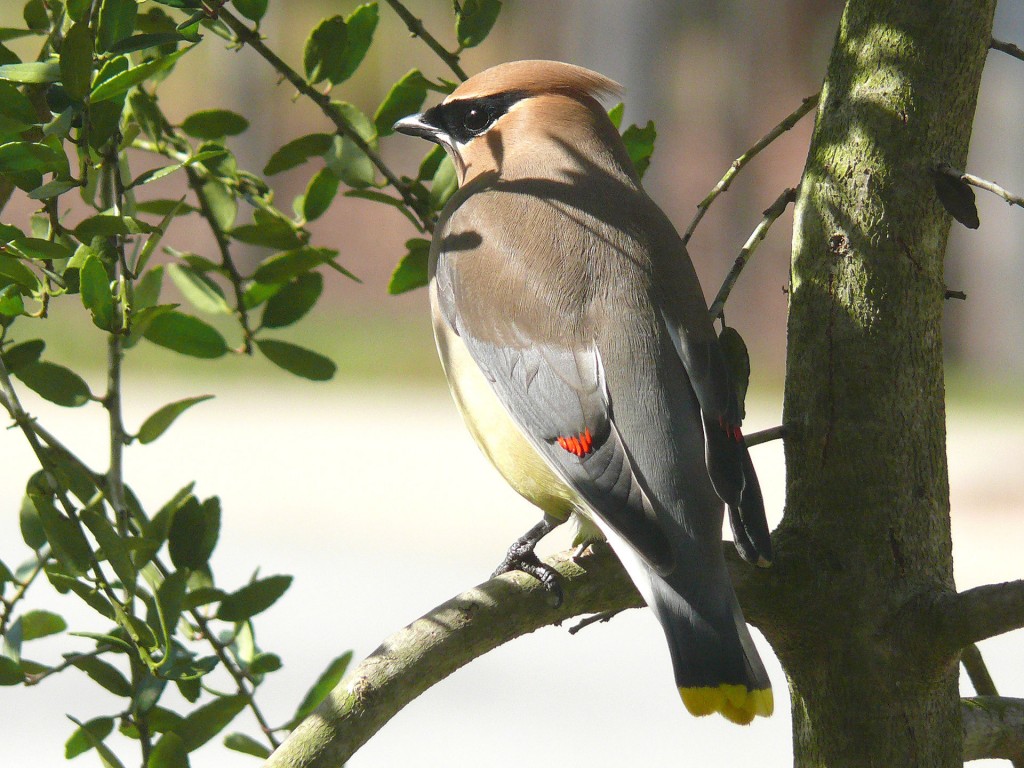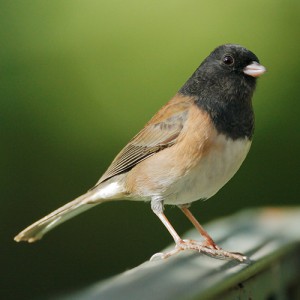A group of bandits and henchmen invaded our yard today. Their appearance is an annual event, at least for the bandits, who tend to arrive in early autumn, hang out for 10-20 minutes and then leave. In contrast, I can see the henchmen year round. Of course, I am not writing about people, but about birds. The bandits are cedar waxwings, a gray brown bird with a sporty, almost mohawk crest. A black mask covers their eyes giving them their nefarious appearance. The henchmen are dark-eyed juncos, in particular the Oregon form with their conspicuous black hoods and handsome little pink bills.


As usually happens, the waxwings appeared suddenly, with a flurry of wings and high pitched whistles. They had come to dine on berries on our black hawthorns. Our hawthorn, the native Crataegus douglasii, is about 35 feet tall with 1-inch-long thorns. I always appreciate when the waxwings arrive because they tend to decimate the berries, which are abundant enough to make our path a mess.
Waxwings are fun birds to watch through binoculars as you get glimpses of the shimmering red wingtips and yellow tipped tail. They are active birds flitting from branch to branch, stopping periodically to swallow a berry, though I watched far too many birds drop the berries right back down on to our path. With at least a dozen birds flapping and winging around, it looked as if the tree was going to take flight.
One Mr. Forbush once described the birds this way. “Like some other plump and well-fed personages, the Cedar Waxwing is good-natured, happy, and tender-hearted, affectionate and blessed with good disposition. It is fond of good company.” He also reported on the birds surprising habit of passing a cherry along from bird to bird as they sit in a row. No one knows why.
Although I can see the juncos any day of the year in our yard, and regularly when out hiking, I still enjoy watching them bounce around. They were formerly known as common snowbirds, and are more common in winter, when they descend from the mountains and foothills. Like many small birds, they seem to be in constant motion, hopping about the ground in search of seeds, berries, and arthropods.
Now they are all gone. The yard is quiet. The hawthorn has fewer berries. I await the return of the bandits.